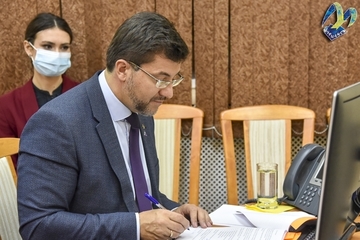
Akureyri city is located in the north-west of Iceland, in one of the longest fjords in the country, it is surrounded by mountains, the height of which reaches 1000-1500 meters. Akureyri is located 60 kilometers from the Arctic Circle, but the climate here is mild, the average temperature in summer reaches + 25 ° C, and the average winter temperature is around zero.
Short story
Nothing was known about the city until 1562. The city has an ancient name, the etymology of which indicates the role of agriculture in its history (akur – "land, field"), but the development of Akureyri was closely associated with trade and export of agricultural products.
In 1787 the monopoly on trade in Iceland was abolished, and Akureyri became one of six cities in the country that received the right to market trade. Since Iceland was under the rule of the Danish crown, trading activities were controlled mostly by Danes or traders with ties to Denmark. During the long period of Danish rule, the inhabitants of Akureyri borrowed a lot from the Danes, such as potato cultivation, forestry, architectural skills and cultural elements.
Akureyri received municipal rights in 1862, when the population of the city reached 300 people, and since that time it has been constantly growing. In 2008 and 2009, two islands in the fjord, Chrysei and Grimsey, became part of the Akureyri municipality. The population of the city in 2013 is 17 966 people.
Akureyri today
Akureyri is full of life all year round; it is the most populous city of all settlements located far from the central regions. Akureyri is the business and service center for the entire north of Iceland. It is also a historically important educational and cultural center. There are two of the largest Icelandic fishing companies operating in the city, and the role of the tourism industry is constantly increasing. Akureyri is a popular destination for both short and long trips. The city has a lot to offer, in its surroundings there are many beautiful and interesting places. A wide variety of activities are offered, such as whale safari, river rafting, sailing, cycling, horse riding and hiking.
Akureyri is surrounded by wide mountain ranges, their biosphere and landscape are amazingly diverse, and the vegetation in many places is extremely rich. The city has interesting natural features; a wide variety of plants can be found in the Akureyri hills. The Akureyri Botanical Garden is widely known for its plants and flowers. It features typical Icelandic flora, as well as over 6,000 plant species from other countries. The garden was founded in 1911 and today it is one of the most visited places in the city, attracting both tourists and locals.
The area around Eyja Fjord is ideal for cross-country skiing and downhill skiing. Akureyri Ski Center is located on the slopes of Mount Hlidarfjall, a 10-minute drive from the city center.
Akureyrar Water Park (Sundlaug Akureyrar) is one of the most popular swimming pools in the country. It is open all year round, from early morning until evening. There are two outdoor pools (25 meters) heated by water from geothermal sources, the temperature of which reaches 27-28 ° Ñ, as well as an indoor pool (12 meters), geothermal baths (38-42 ° Ñ), Turkish baths, water slides, children"s pool and playground. Another indoor sixteen-meter pool is located in the sports center of the Gler school (the water temperature in the pool is 31 ° C).
Akureyri is widely known as a cultural center, and the concentration of cultural life is Kaupvangsstræti Street, also known as the "Artists" Alley". For a long time it was a place of intense industrial activity. Over time, it moved to other areas, freeing up a large number of buildings that some residents intuitively found to be ideal locations for artistic activities. First of all, these are the buildings of the Akureyri Museum of Art, the School of Fine Arts, art studios of North Icelandic masters, as well as small galleries, restaurants, cafes and large exhibition halls. Akureyri has inspired some Icelandic writers who are beloved in their homeland. Their homes are now museums.
Local authority
There are two levels of administration in Iceland: state and local government. The Icelandic state system is based on the separation of the judiciary, legislative and executive powers. Local governments are one of the sources of state executive power in Iceland.
They play an important role in the implementation of the policy of democracy in the regions and are closest to the population. Every four years, residents of municipalities elect their representatives to the local government, thus taking a direct part in the life of the municipality.
The number of members of the city government in each municipality varies, depending on the population of the city. According to the law, the local government consists of three main members and the same number of reserve representatives. Most local governments have 5 to 11 representatives, while Akureyri has 11.
Political parties in the city council
In May 2010, elections were held for the municipality. 74.6% of the population took part in the voting. The results were as follows:
City party – 1 representative
Progressive Party – 1 representative
Independence Party – 1 representative
People"s Party – 6 representatives
Social Democratic Party – 1 representative
Left-green movement – 1 representative
Total number: 11 representatives
The majority is represented by the People"s Party (6 members of the city council).
Fertility and mortality in 2010
Born: 309 people
Died: 107
The unemployment rate today is 5.4%
Average monthly salary : ISK 338,000 (€ 2,058)
The Mayor of Akureyri is Mrs Astildi Sturludottir.
Official website of Akureyri:
https://www.akureyri.is/is/stjornkerfi/akureyri/akureyri-municipality
